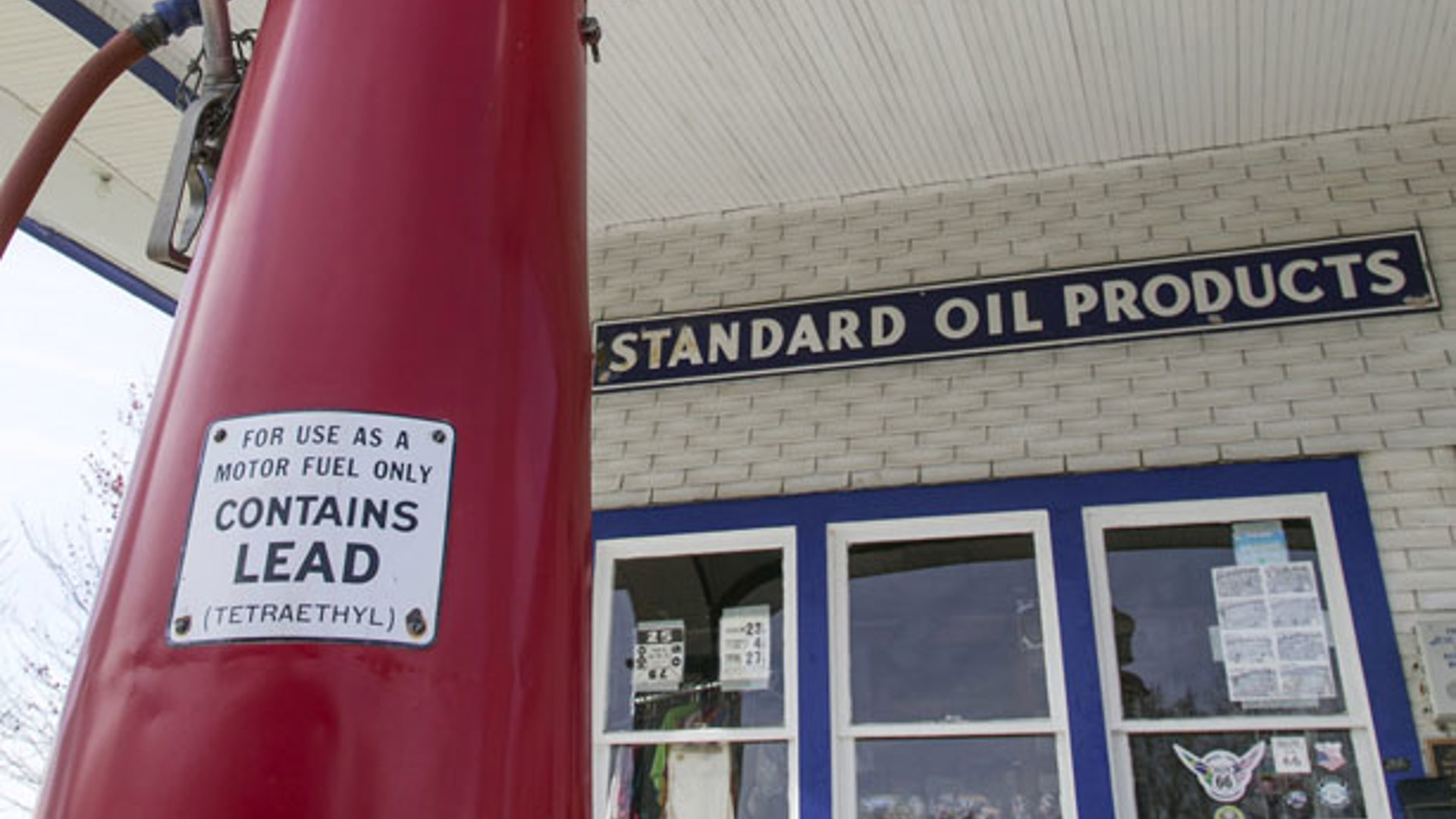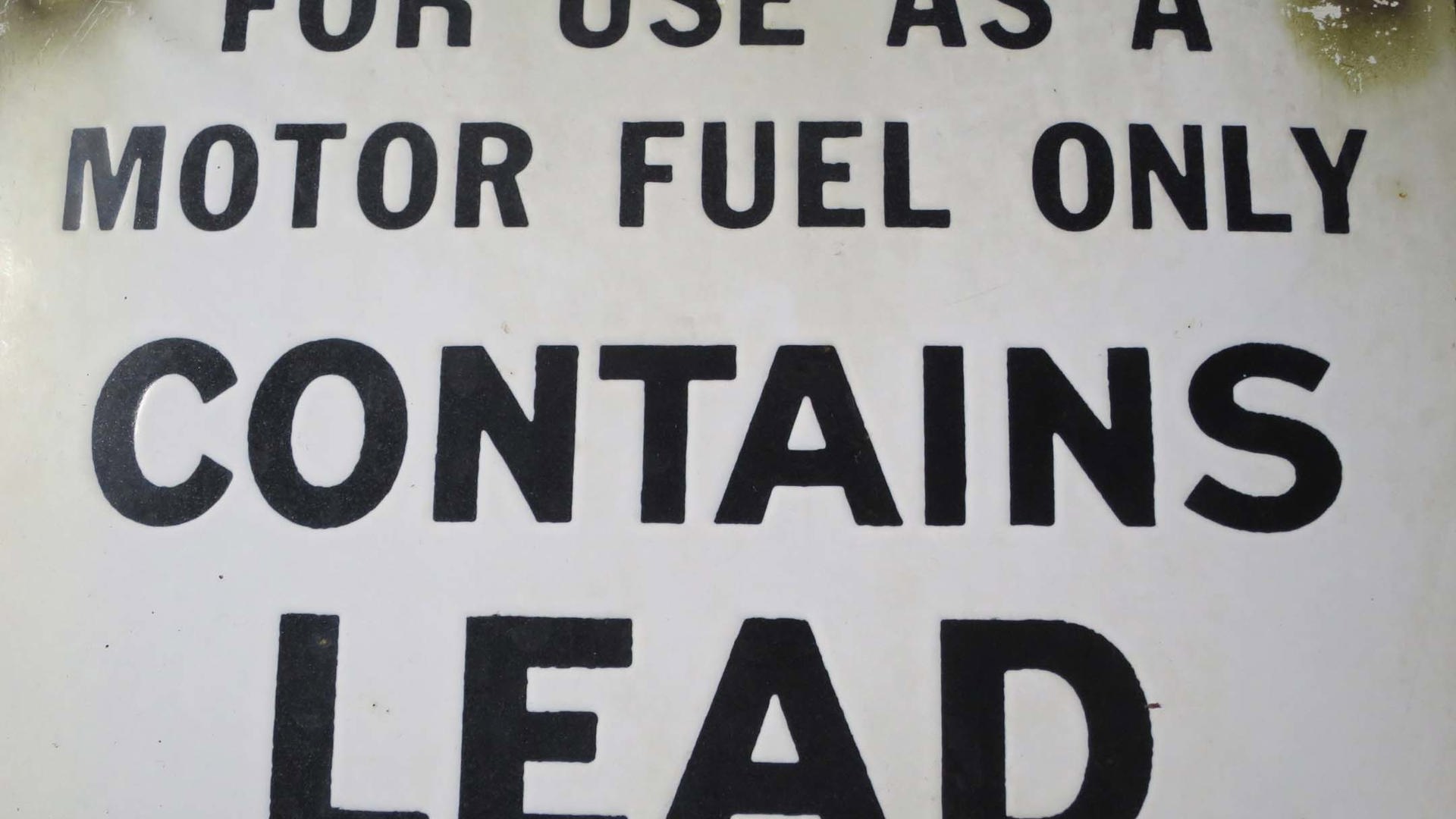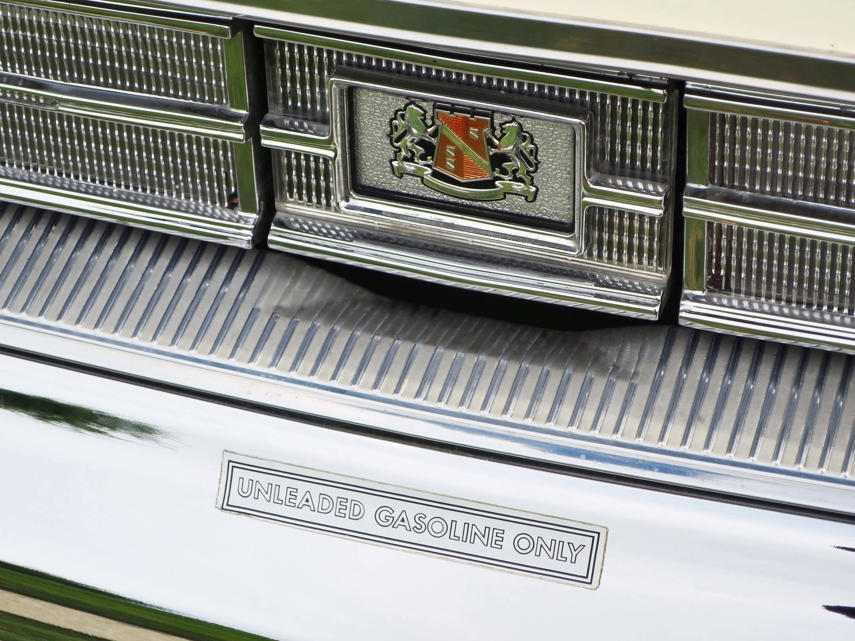Vehicle tailpipe emissions are still an ongoing concern, but their direct effect on human health actually used to be much worse. For almost 70 years, oil companies added lead to gasoline, turning it into an even more toxic mixture that some have even linked to a rise in violent crime.
And it certainly wasn’t that the danger was unknown. People were dying of lead poisoning right from the start, but nothing was done about it until leaded gas proved to be lethal – to a newly invented car part.
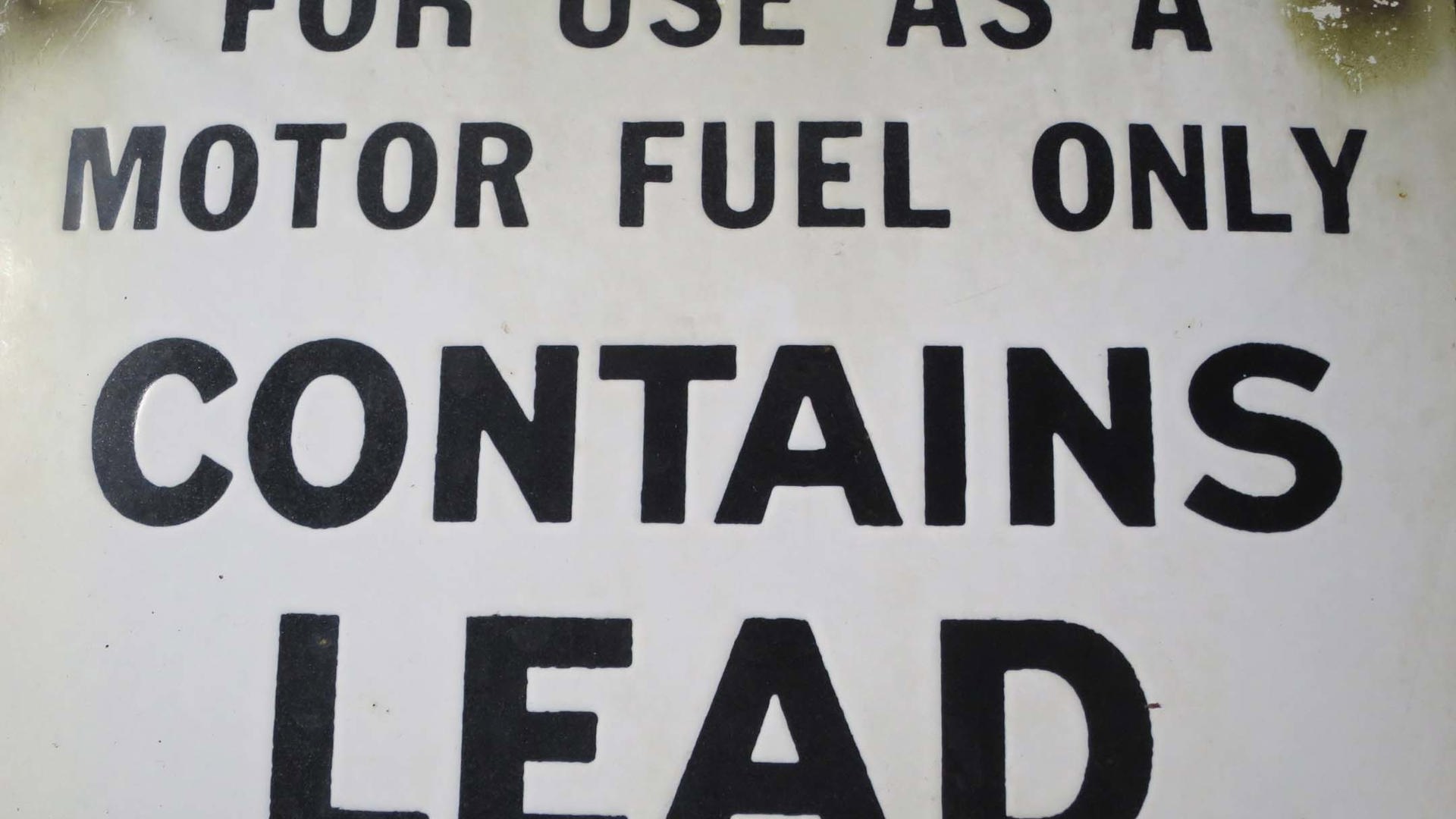
Dangerous from the start
The engines on early cars weren’t very powerful, and plain gasoline was fine for them. But as engineers increased compression to get better performance, they ran into the problem of engine knock. The hotter combustion chamber caused spontaneous combustion, which had the potential to damage the engine.
Higher-octane fuel is less volatile, and so less likely to combust prematurely. General Motors worked on ways to increase octane, but management handed down guidelines: it had to be easy, inexpensive, and patentable. Thomas Midgley, a researcher at GM’s Delco division, tried several additives, including iodine and grain alcohol, before landing on tetraethyl lead.
GM and Standard Oil partnered on the Ethyl Gasoline Corporation in 1923 to make leaded gas. There was a ceremony to introduce it, but Midgley was too ill from lead poisoning to attend. Two of his coworkers died of it, and at the plant that made the additive, 15 workers died and 40 became ill within a year.
The deaths led to the US Surgeon General appointing a council to study the issue, with a seven-month timeline. The council initially said that wasn’t enough time to properly study the reports – but even so, within the “too-short” timeframe, it ruled that it had no grounds to ban ethyl gasoline, as long as its distribution and use were properly controlled.
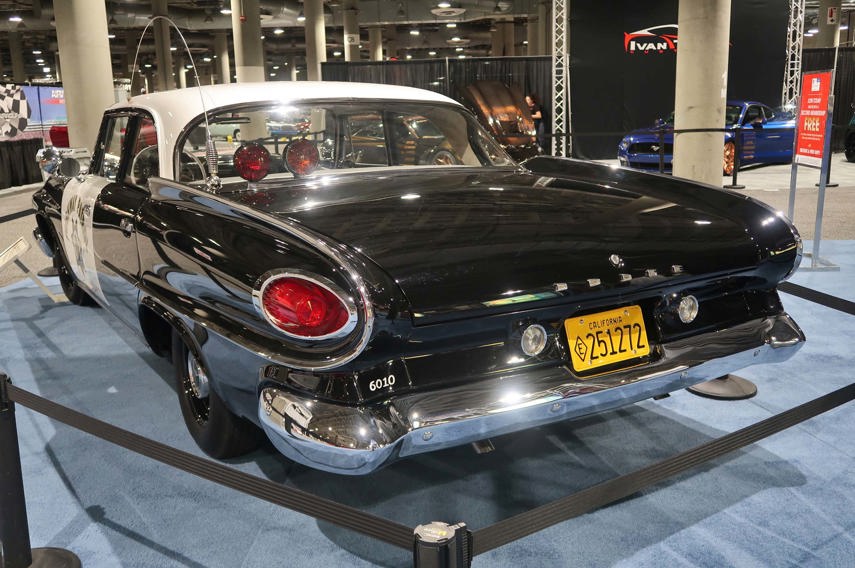
An escalating threat
Now that engine knock was solved, automakers went all-out to add even more powerful engines, which chewed through greater quantities of leaded gas. The Surgeon General’s council had set a limit of 3 cubic centimetres of lead per gallon (cc/g) – but it was just a voluntary guideline.
By 1958, based on reports that said people didn’t have more lead in their bodies, even though more leaded gas was being sold than ever before, the Surgeon General raised the guideline limit to 4 cc/g. Cynics might note that was also the year when the big domestic automakers released several higher-compression engines.
But reports did show that blood lead levels had risen sharply since 1900, and it was especially high in children, where it causes neurological development delays. There was also lead in house paint, cosmetics, plumbing pipes and packaging, but gasoline deposited it everywhere. It went into the air as exhaust, from there it settled onto the ground, and it got into groundwater when it spilled or storage tanks leaked. People who lived close to highways had far higher levels of it than those who were farther away from traffic.
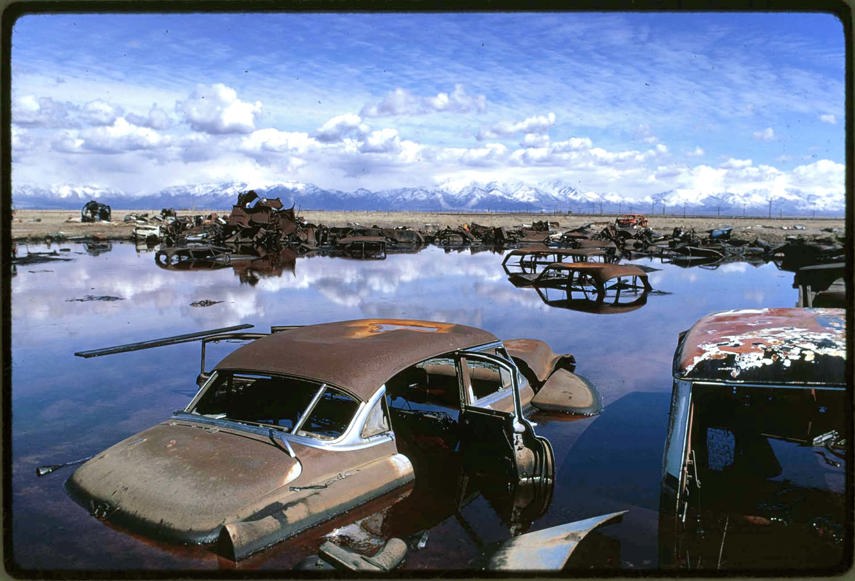
Laws and lawyers
But as smog turned the skies brown over many cities, particularly in Los Angeles, the US government finally saw air pollution as a political issue. In 1963, it passed the Clean Air Act, and formed the Environmental Protection Agency (EPA) in 1970. Three years later, that agency released a study confirming that airborne lead was, indeed, a health problem.
The EPA tried its best. Most refiners were adding 2.0 grams of lead per gallon, and the agency issued regulations that would gradually reduce it to 0.5 grams between 1975 and 1979. But the oil companies immediately filed lawsuits, stalling the regulations.
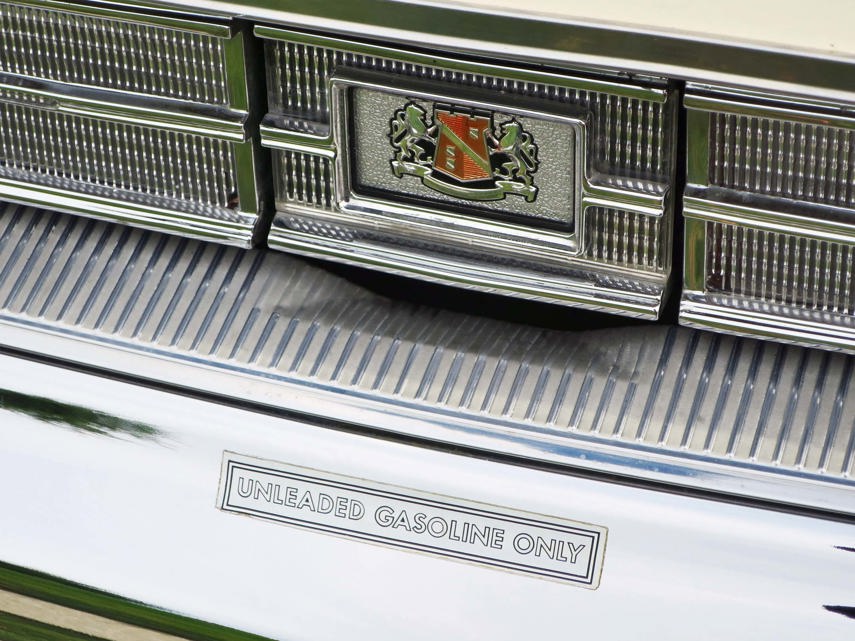
Killed – by smog, no less
Ultimately, what finally stopped lead wasn’t a direct regulation against it, but a side effect of an unrelated rule. Scientists determined that smog was created by auto emissions such as nitrogen oxides, hydrocarbons, and carbon monoxide. The EPA passed regulations requiring automakers to clean up their tailpipes.
The car companies came up with several ideas, but one of the most effective was the catalytic converter, which started appearing on cars in 1975. The main drawback was that this expensive component could be irreparably damaged by lead.
With that opening, the EPA passed new rules. Lead content was reduced by 90 percent in the US as of January 1, 1986, and ten years later, leaded gas was completely banned for on-road vehicles. Canada phased out leaded gasoline in 1990, although a controversial amendment allowed it to be used in race cars right up until 2010.
Taking lead out of gas also took it out of people. In 1978, a US government study determined that some 13.5 million children under the age of five had elevated blood levels. By 2008, it was down to 250,000. Some researchers also suggested that crime rates rose in conjunction with leaded gasoline, and dropped sharply when it was phased out – the theory being that children born without exposure to lead were less likely to have symptoms such as lower intelligence, higher aggression, and poor decision-making.
Ultimately, the story of leaded gasoline was one of human health versus industry. It was an incredibly toxic product, but was finally pulled off the market not because it harmed people, but because it harmed machines.

